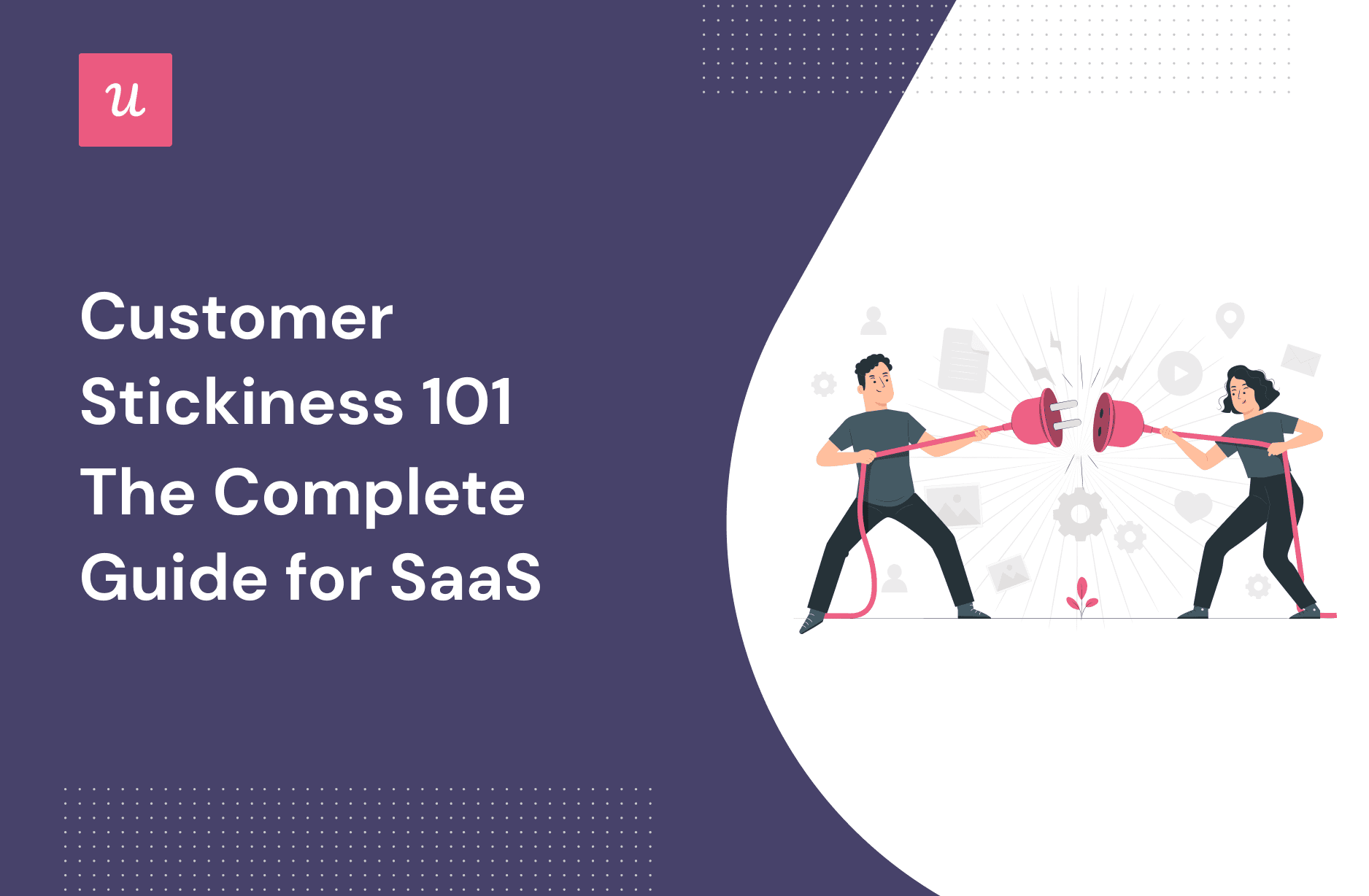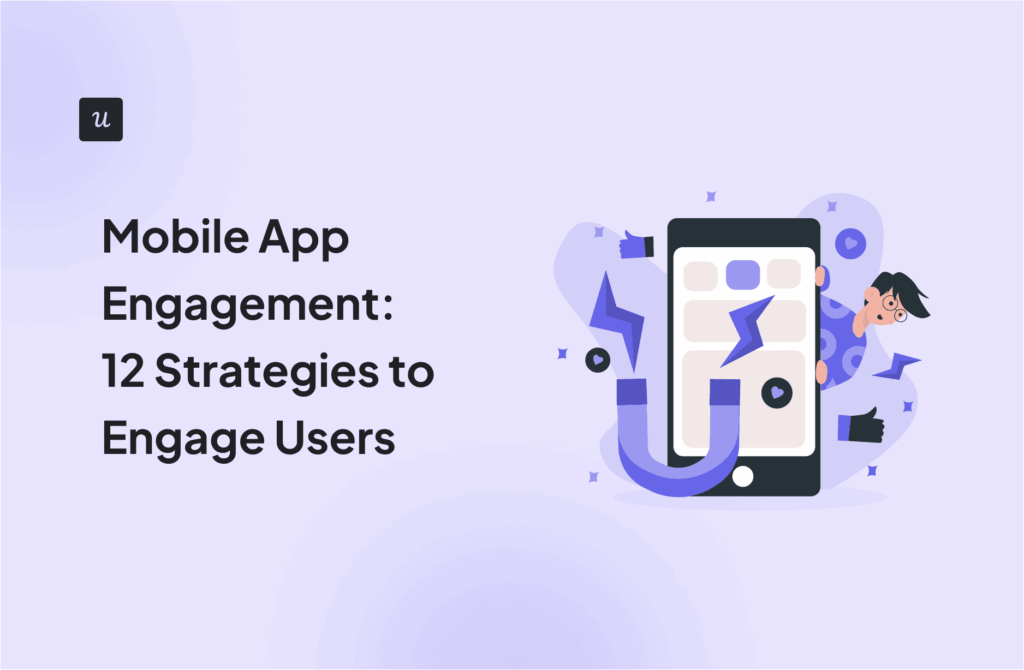
You might have a great product, but are your users engaging with it? Without customer stickiness:
- You’ll find it impossible to generate brand advocates.
- Customer retention will be harder to improve.
- You’ll have weaker word-of-mouth.
- You won’t be able to engage customers with your product.
For all these reasons, we’ve built this guide on how to drive stickiness and use it to improve customer loyalty.
Let’s go over the basics first.
Try Userpilot Now
See Why 1,000+ Teams Choose Userpilot

What is customer stickiness?
Customer stickiness is when your users keep experiencing repeated value and decide to stick around through renewing their subscriptions (for SaaS businesses) or purchasing multiple times from your store (when we talk about eCommerce).
Typically customer stickiness is achieved because of transactional values such as price, quality, service delivery, and more.
What is brand stickiness?
Brand stickiness means that your customer is incentivized to “stick” with your brand because of an emotional or convenient incentive.
This goes back to your brand reputation and how the user perceives it. Sometimes brand stickiness happens because the user wants to be associated with the same values your brand is recognized for (think Apple products) or because you give them a reason to stick to your brand ( think Amazon customer service and variety of products available- how convenient, right?).
For example, the customer sticks with your product because changing it would mean having to spend time migrating data, going through a demo, and setting up configurations again.
Customer stickiness vs. customer loyalty
Compared to customer stickiness which focuses on repeated value and purchases, customer loyalty is about building a relationship that involves trust, affinity, and moral values.
And you do this by strengthening your relationship with existing customers.
It’s easy to confuse the two, but think of it like this: customer stickiness is all about building new relations (it’s always about the next purchase or the next subscription renewal) while loyalty is a long nurturing game.
Pro tip: The best way to measure customer loyalty with quantitative data is with NPS surveys and aiming for a minimum score of 41 (as Satmetrix’s benchmark suggests for SaaS businesses).
Each industry is different, so even if benchmarks can give you an idea of a good score, you should reply on comparisons with your own benchmark data.

Product stickiness vs. customer stickiness
You achieve product stickiness when a customer understands the product’s value and actively engages with essential features that drive customer success.
Here, the goal is to design a product that’s irreplaceable, engages users, and gets the job done, using strategies like The Hook Model for example.
And although a sticky product leads to more customer stickiness, they’re not the same.
Product stickiness is about the product’s potential of retaining users. It’s achieved through building an engaging product, while customer stickiness is when users discover and experience the value and decide to stick around.
In short, customer stickiness is the end result of a sticky product.
Customer stickiness vs. customer retention
Customer retention measures the percentage of customers who keep using your product after a specific period of time. Plus, it relates to many other financial or business metrics such as net/gross retention and net dollar retention.
In contrast, customer stickiness has to do with the users’ decision and motivation to stick around and buy more from you due to the transactional value behind it.
Customer stickiness is about why and how to make users repeat purchases and retention is kind of like a measure of how well you are doing and the impact it has on your business.
How do you measure customer stickiness?
The customer stickiness formula is pretty simple:
Customer stickiness = (repeat customers / all customers) x 100
For example, if 1000 new customers sign up every month and 230 of them purchase a paid plan more than once, your average customer stickiness level would be 23% percent.
Why should you care about customer stickiness?
You might think measuring customer stickiness isn’t necessary. But, more customer stickiness means:
- Less churn
- Easier upsells and account expansions
- More brand advocates who’ll spread positive word-of-mouth
Let’s go over these benefits.
Customer stickiness drives churn reduction
Customers will churn when they don’t experience the value of a product they paid for.
With more stickiness, users make repeated purchases because they see your offer as a good transaction (due to price, number of features, utility, and so on)—and providing repeated value equals more reasons to stick around (and less churn, of course).
It’s easier to upsell to loyal customers and increase expansion MRR
More stickiness won’t only reduce your churn rates.
When a customer keeps experiencing high value by using your product, and keeps renewing their subscription it’s easier to generate account expansion through upsells —resulting in higher expansion MRR.
Customer stickiness drives positive word-of-mouth
Sticky customers are more likely to become brand advocates and talk proudly about your brand.
And, you can easily convince brand advocates to leave testimonials, refer your brand to their network, and write reviews on platforms like G2, ProductHunt, and Capterra—which is social proof you can capitalize on your marketing.
Here’s how you can drive WOM with in-app engagement.
How to increase customer stickiness
Customer stickiness starts with a transactional relationship. But you don’t need to decrease your prices and kill your margins.
It’s more about an exchange of value, even though it involves money in the end.
Since we buy based on perceived value rather than rational thoughts, you only need to provide repeated value to incentivize repeated sales.
Here are a few customer stickiness tactics to offer repeated value within your product.
Personalize the product experience from the first touch
To have a positive first impression, personalize the onboarding process to offer a product experience that’s highly relevant for them.
There are two ways of doing this:
- Collect data during signup and optimize the product experience based on what the user needs are. If the user is a team of one, then you don’t prompt them to invite team members.
- Let the user choose their onboarding path. Just like Notion’s signup process. This method works because a personalized product experience helps the customer understand your product faster (and stick around longer).

Make sure users get to experience the promised value—fast
In SaaS, the customer will only experience the promised value when they reach the activation point (the stage where the user engages with the key features that drive customer success).
Note: Don’t confuse activation with the “AHA moment,” which is the emotional realization that the product is a fit for the user and makes them try it.
To increase customer stickiness, lead the user to reach the activation point as soon as possible.
Break down the steps needed in small steps and use an onboarding checklist to prompt users to take action.
Pro tip: Add a progress bar and dummy tasks (steps already crossed out) to make the user feel like they’ve made progress. This works because—according to the Zeigarnik effect—our brain remembers unfinished tasks, giving us a higher motivation to finish something we already started.

Announce new features and drive repeated value
To offer repeated value after the user has reached the activation point, announce relevant features and updates regularly with segmented modals, tooltips, and banners.
You want to use a modal for impactful announcements such as a big update, a highly anticipated feature etc.

But modals are annoying when they pop up every day. So for simpler stuff, like feature enhancements, use tooltips to introduce features and drive engagement.

This tactic works because new features provide a sense of novelty and make the user feel like they’re constantly progressing with your product—increasing customer stickiness.
Provide help when users need it with self-service support
No one likes to wait in line to get their problem solved.
That’s why a product-led SaaS should include an in-app support hub so users can get answers fast and solve problems themselves.
With in-app support, users can browse through product guides, your product’s knowledge base, and webinars, and have access to video tutorials and support agents without leaving the product:

Self-service support reduces friction for stickiness, as getting access to quick solutions mitigates the frustration and keeps the product experience engaging.
Understand what’s driving customer loyalty and replicate
Ok, you want to offer a personalized product experience to your customers. But how do you know what’s valuable for them?
To find out, identify your loyal customers using NPS surveys so you can understand what makes them loyal. Cross-reference promoter’s data to find out:
- What are the essential features they can’t live without?
- What made them realize that the product was right for them?
- Did they find success early? How?
Then you can hand-hold new users with the same needs through the same path your loyal customers went —and even improve it.
You can, for instance, show hotspots to highlight specific sections of the UI and help the new user discover the same features that your loyal customers found valuable.

Customers love when you introduce them to essential features they’re not using, which sets the stage for creating loyal customers.
How can Userpilot help drive stickiness and customer loyalty
If you’ve read all the tactics in the last section, you’ll notice that they require personalized in-app communications and experiences within your product.
Userpilot is a customer onboarding platform you can use to handhold your customers and make sure they stick around (without having to code).
Here’s how:
Use different in-app messaging types to reach your customers
UI patterns such as modals, slideouts, checklists, and hotspots are essential to engage customers across the buyer journey.
To improve customer stickiness, you can use Userpilot’s engagement layer to build conditional flows and show relevant UI patterns based on the segment or in-app behavior:

Remember the checklists and hotspots from the last section? This is what you’d use to apply those tactics and do proactive engagement.
Reach the right customer with the right message
As we said, segmentation is essential for providing the right experience to the right customer.
That’s why Userpilot offers advanced segmentation—so you don’t annoy your customers with the wrong modal or tooltip.
While segmenting, you can choose between 6 criteria groups:
- User data: includes user attributes such as name, id, plan, web sessions, device type, signup date, and many others.

- Company data: user attributes on company-level data (company size, revenue, etc).
- Features & events: build segments based on the tagged features, in-app events, or custom events (you need a developer to set the latter).
- Segments: user segments you’ve created before.
- Content Engagement: Segment users by the experiences they’ve engaged with or some UI-pattern-specific criteria. E.G., users who have a specific checklist “in progress.”

For example, you can add event counts to your flows and reward customers who have made repeated purchases with discount vouchers (so customers stick around). You can do this quickly in your flow’s settings:

Collect NPS in-app and automate responses
NPS surveys are an excellent tool for understanding your users.
Userpilot not only lets you get qualitative NPS feedback, but you can also tag NPS responses by common themes or keywords.

What’s better, you can use these tags to segment users based on their NPS answers. So you can, for instance, follow up with the detractors that are at risk of churning due to a specific bug and communicate that it’s being fixed.
Conclusion
Customer stickiness is essential to generating loyal customers.
Think of it as a stepping stone between being a new user and becoming a brand advocate.
That’s why improving your product’s experience is crucial, so your customers are more likely to stick with your business instead of the competition.
So, if you want to implement in-app experiences without code, get a Userpilot demo and see how you can improve customer stickiness!






